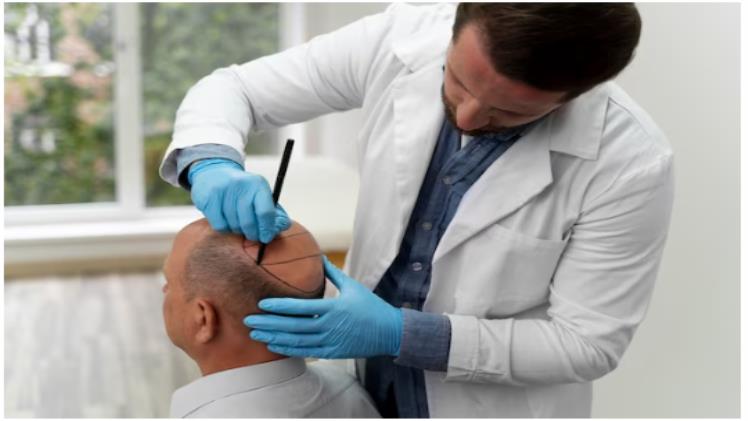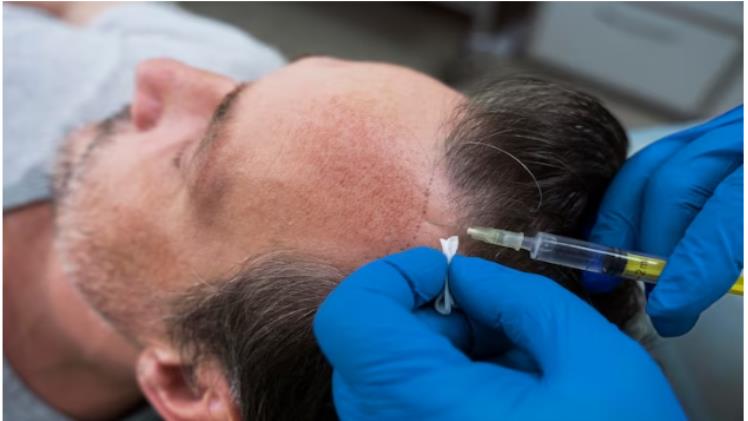In the realm of hair restoration, individuals facing hair loss often find themselves at a crossroads, contemplating the best method to regain a fuller head of hair. Two popular techniques that have gained prominence in recent years are Direct Hair Implantation (DHI) and Follicular Unit Extraction (FUE). DHI vs FUE methods offer effective solutions, but understanding the nuances of each can be crucial in making an informed decision tailored to individual needs.
Understanding DHI:
Direct Hair Implantation, or DHI, represents a cutting-edge advancement in the field of hair transplantation. Unlike traditional methods, DHI involves a meticulous process wherein hair follicles are extracted individually, directly from the donor area, and implanted into the recipient area without the need for prior channel creation. This technique, often referred to as the Choi Implanter Pen method, ensures a higher density of transplanted hair and minimal trauma to the scalp.
Pros of DHI:
Natural Looking Results: DHI allows for precise control over the angle, direction, and depth of hair follicle placement, resulting in a more natural-looking hairline.
Minimal Scarring: Since DHI does not require the creation of recipient channels, there is minimal scarring, making it an ideal choice for those who prefer to wear their hair short.
Faster Healing Time: The absence of incisions or stitches in the recipient area contributes to a faster healing process, allowing individuals to resume their daily activities sooner.
Reduced Trauma to Hair Follicles: DHI’s one-step process minimizes the time hair follicles spend outside the body, reducing the risk of damage and ensuring a higher survival rate.
Understanding FUE:
Follicular Unit Extraction, commonly known as FUE, has been a revolutionary approach to hair transplantation. In this method, individual hair follicles are extracted from the donor area using a tiny punch tool and then transplanted into the recipient area. FUE has gained popularity for its less invasive nature and ability to achieve excellent results in both small and large-scale hair transplants.
Pros of FUE:
Versatility: FUE allows for the transplantation of hair follicles from various parts of the body, providing flexibility in donor site selection.
Less Invasive: The absence of a linear incision in the donor area makes FUE a less invasive procedure, resulting in minimal discomfort and a quicker recovery.
No Visible Scarring: FUE leaves tiny, dot-like scars in the donor area, which are virtually undetectable, making it suitable for individuals who prefer to keep their hair short.
Suitable for Scarred Scalps: FUE can be a preferred option for individuals with previous linear scars from other hair transplant methods.
Choosing Between DHI and FUE:
While both DHI and FUE offer effective solutions, the choice between the two ultimately depends on individual preferences, expectations, and specific considerations.
Considerations for Choosing DHI:
Precision: If achieving a highly precise and natural-looking hairline is a top priority, DHI may be the preferred choice due to its ability to control the angle and direction of hair follicle placement.
Short Hair Preference: For those who prefer to keep their hair short, DHI’s minimal scarring makes it a suitable option, as there are no visible linear scars in the donor area.
Faster Recovery: If a quicker recovery time is essential, DHI’s one-step process and minimal trauma to the scalp can be advantageous.

Considerations for Choosing FUE:
Donor Site Flexibility: If the availability of donor sites from various parts of the body is crucial, FUE’s versatility makes it a favorable choice.
Less Invasiveness: For individuals seeking a less invasive procedure with minimal discomfort and a shorter recovery period, FUE may be the preferred option.
Previous Scarring: FUE can be a suitable choice for individuals with previous linear scars from other hair transplant procedures, as it does not create a linear incision in the donor area.
Conclusion:
In the realm of hair transplantation, the choice between DHI and FUE boils down to personal preferences, desired outcomes, and individual considerations. Consulting with a qualified and experienced hair transplant specialist is crucial in determining the most suitable approach for achieving natural-looking and long-lasting results. Whether opting for the precision of DHI or the versatility of FUE, both methods have proven to be effective in restoring confidence and providing a lasting solution to the challenge of hair loss.

